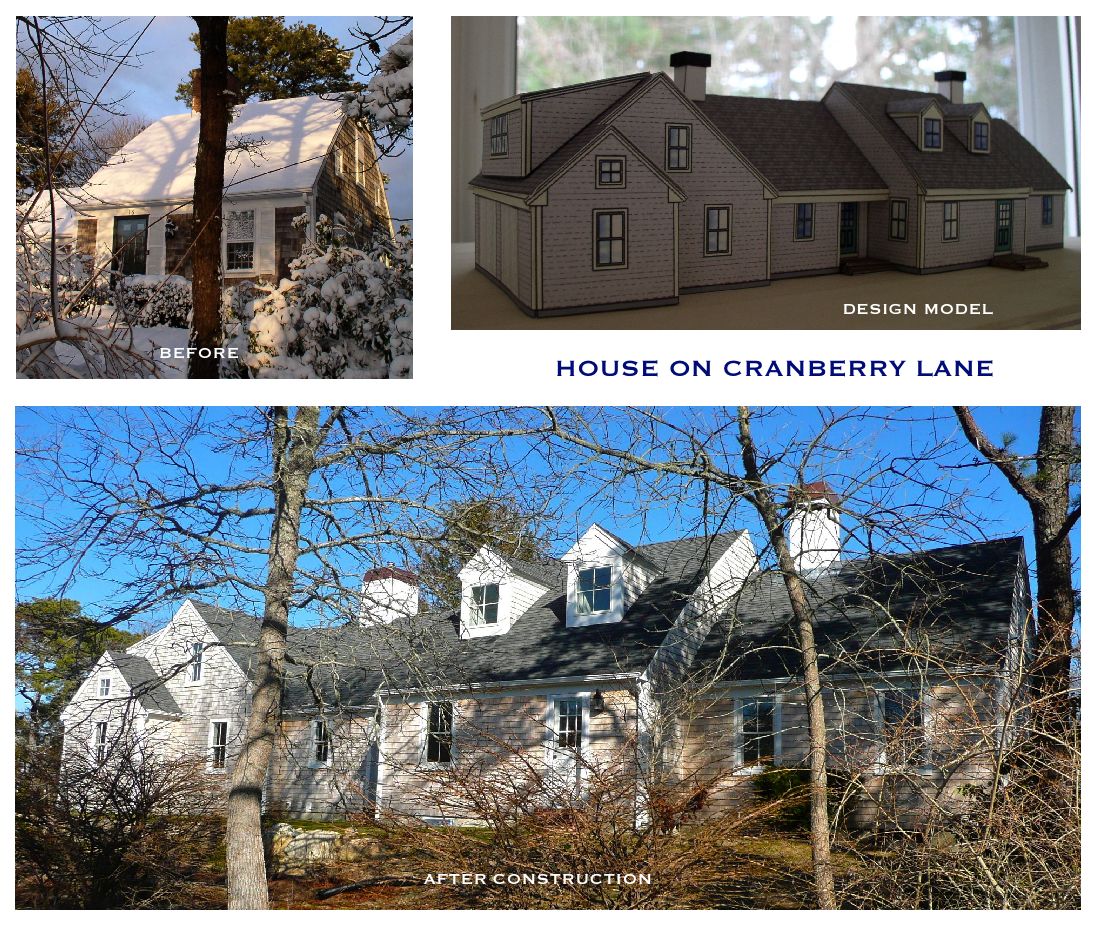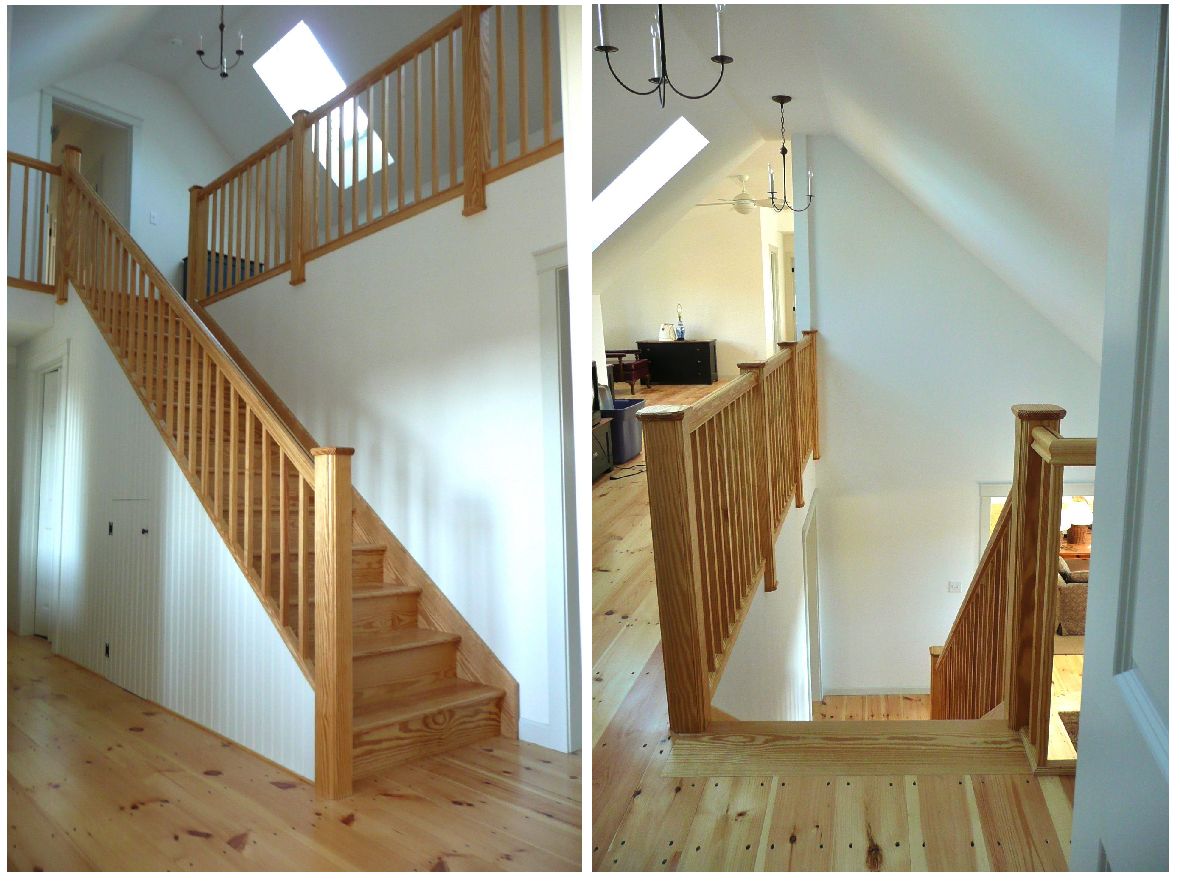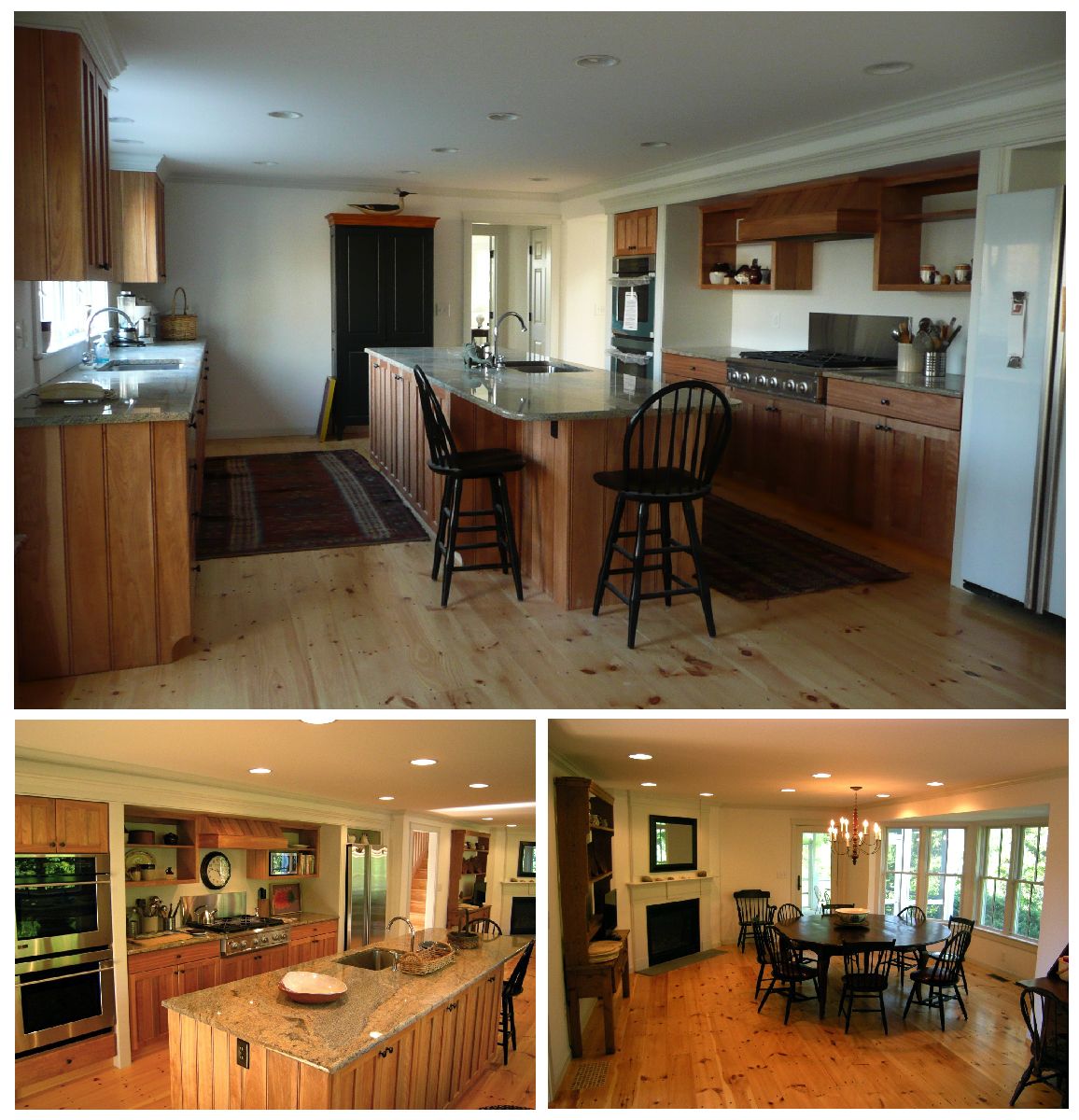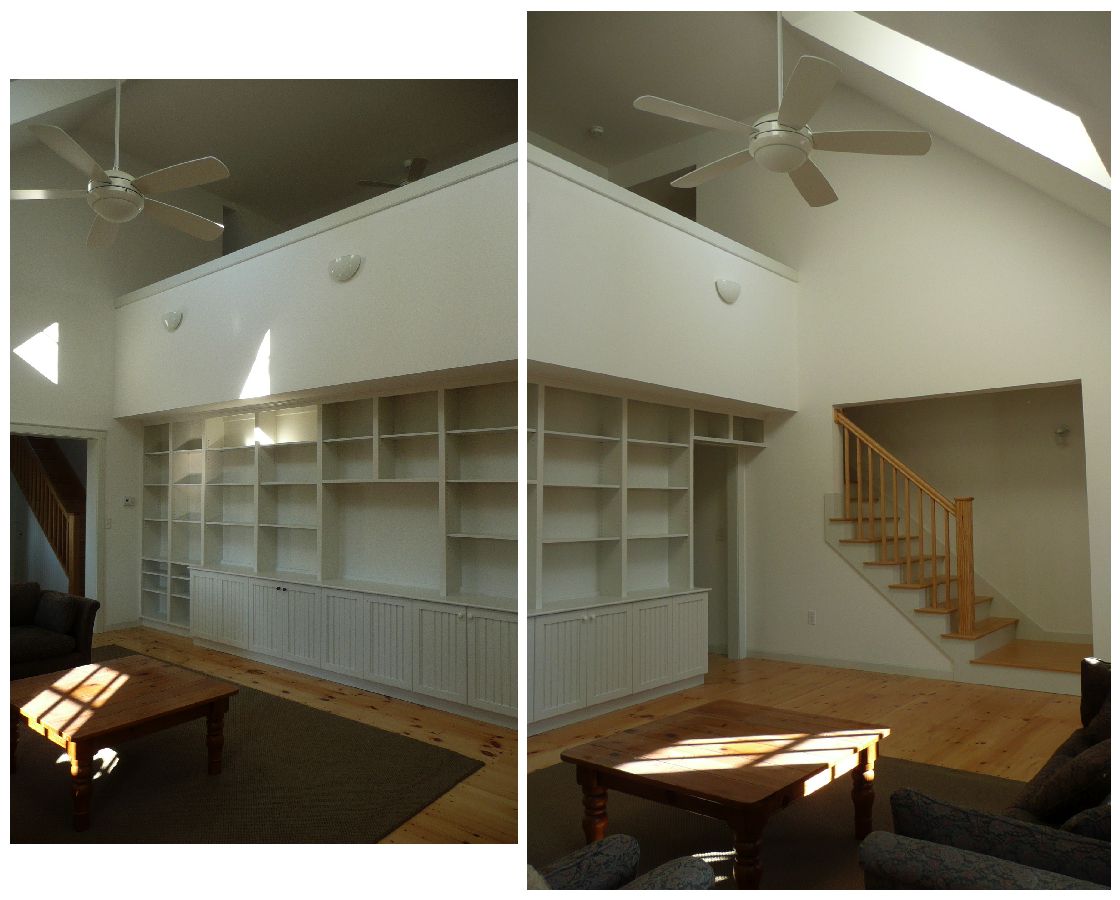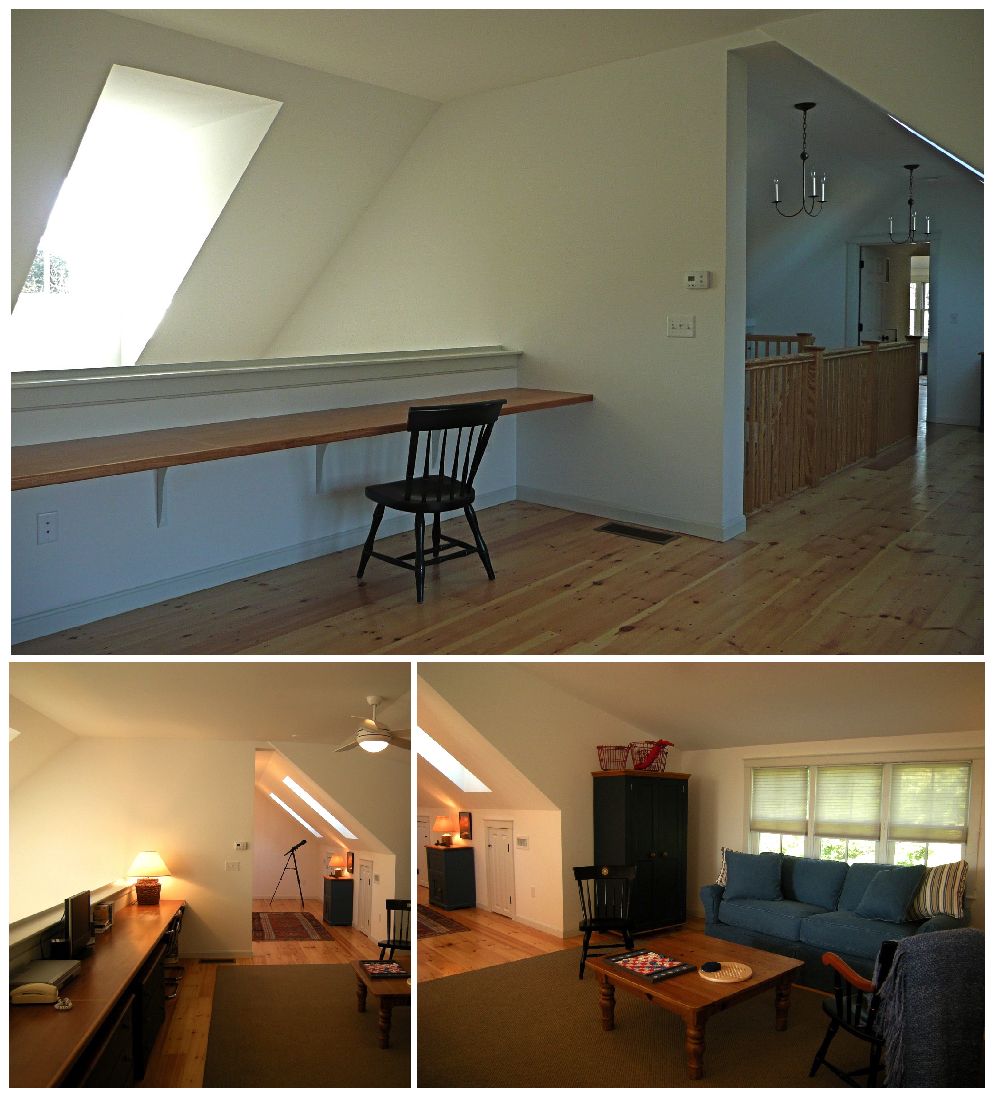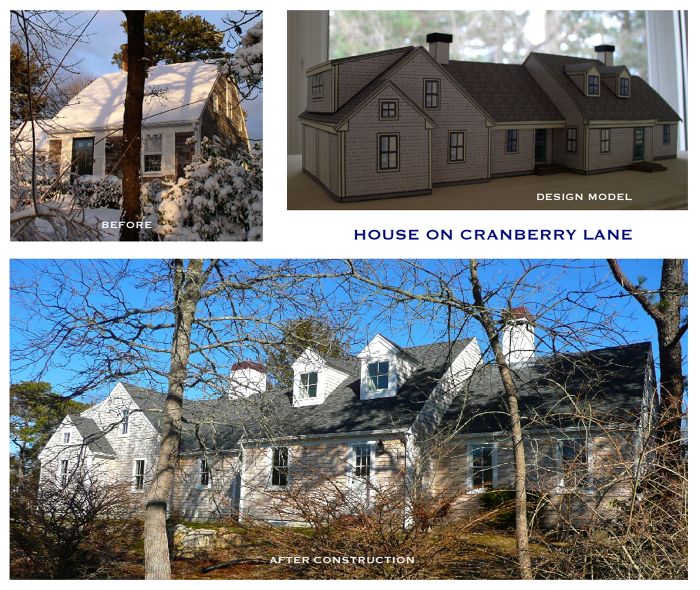
The house on Cranberry Lane began with a reproduction of a historic “half Cape” cottage that was built as a retirement home for one person in 1980. Nearly thirty years later, the next generation of the family asked me to incorporate the original house into a design that would accomodate the extended family for vacations and holidays, yet keep the look and feel of the original cottage from the street. While they wanted a traditional exterior, my clients also asked for a house that would feel more spacious than it looked, and be filled with natural light.
Serial additions are a tradition on Cape Cod, where houses used to grow one room at a time. We needed a lot of room in a hurry, so we built a series of 3 additions all at once, expanding the house to the west into the only available space. The main part of the original house became a first floor master suite. We built a new, slightly larger “half Cape” right next to it which holds the living room and kitchen, followed by a slightly shallower section which holds the entry porch, stair hall, mudroom and dining area. The last section holds a garage, with a second master suite above it. Here, we turned the gable end of the roof to the street and added a small ell that reduces the scale of the garage (and provides a nice spot for a workbench inside). The resulting house is a series of traditional one story Cape forms that looks like it could have been there for many years.
Inside the house, the materials and details are traditional, but the spaces are not. Coming in from the farmer’s porch, the vaulted entry comes as a surprise, with light streaming in from skylights above the stair. The open kitchen and dining area is long and low, with windows looking out over the gardens planted after the original cottage was built. A door at the far end of the room leads to a screened porch that serves as a hub of family life in the summer. The living room is compact in plan, but open to the main ridge and the loft space above. The doghouse dormers on the front roof bring light into both the loft and living room, and also provide a view for anyone sitting at the 20 foot long cherry desktop that runs along the low wall at the edge of the loft. The loft space connects the two upstairs bedrooms, and serves as a combination home office, sitting room, and overflow sleeping area.
All the interior trim, millwork, cabinets, stairs and railings were built on site, providing character to the house with a modern spin on traditional New England craftsmanship.
